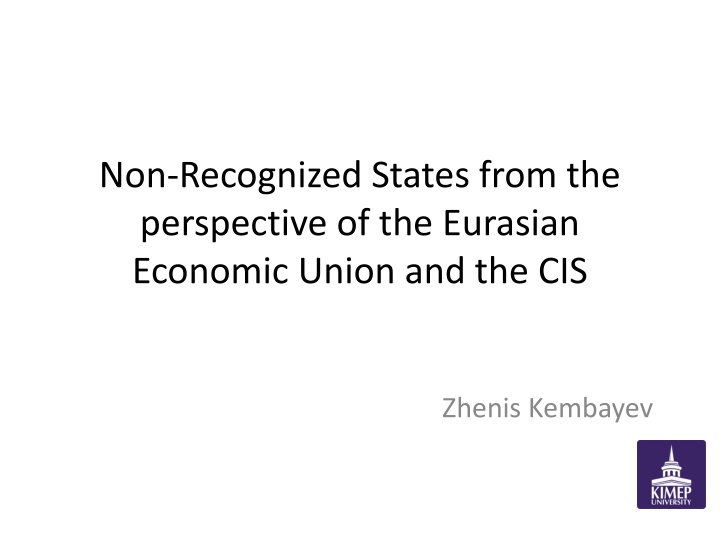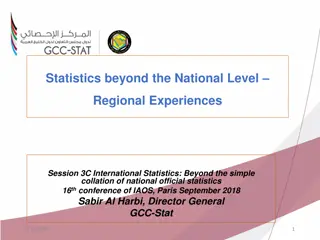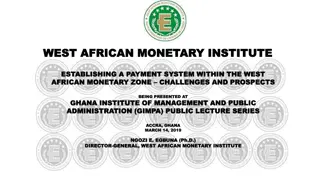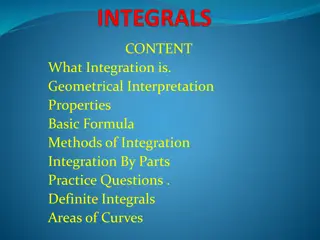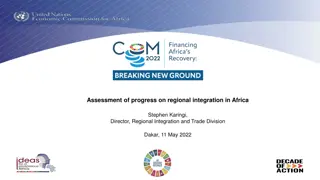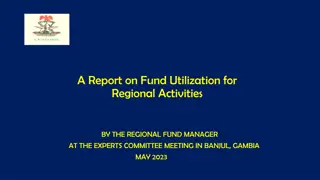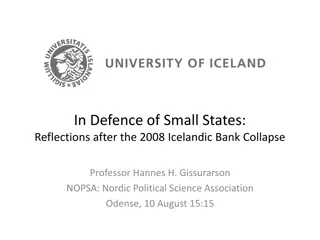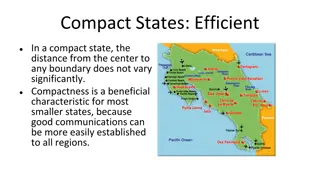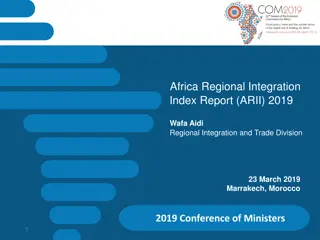Regional Integration and Non-Recognized States in Eurasia
The Eurasian Economic Union (EAEU) and the Commonwealth of Independent States (CIS) play crucial roles in regional integration in Eurasia. Both organizations emphasize principles of international law and member state equality. The CIS Free Trade Area and EAEU's objectives focus on economic development and creating an internal market. The EAEU's institutional framework reflects the strong presidential authorities in its member states. This overview examines the dynamics of regional integration while addressing non-recognized states within the Eurasian context.
Download Presentation

Please find below an Image/Link to download the presentation.
The content on the website is provided AS IS for your information and personal use only. It may not be sold, licensed, or shared on other websites without obtaining consent from the author.If you encounter any issues during the download, it is possible that the publisher has removed the file from their server.
You are allowed to download the files provided on this website for personal or commercial use, subject to the condition that they are used lawfully. All files are the property of their respective owners.
The content on the website is provided AS IS for your information and personal use only. It may not be sold, licensed, or shared on other websites without obtaining consent from the author.
E N D
Presentation Transcript
Non-Recognized States from the perspective of the Eurasian Economic Union and the CIS Zhenis Kembayev
Overview Regional integration processes in Eurasia, which trace their roots to the CIS, Founded on 8 December 1991; Current membership includes 10 countries: Armenia, Azerbaijan, Belarus, Kazakhstan, Kyrgyzstan, Moldova, Russia, Turkmenistan, Tajikistan, and Uzbekistan. Have culminated in the establishment of the EAEU Established on 29 May 2014; Current membership includes 5 countries: Armenia, Belarus, Kazakhstan, Kyrgyzstan, and Russia.
Principles Both the CIS and the EAEU are intergovernmental organizations. Both organizations emphasize that they are based on the universally recognized principles of international law, in particular: the principles of sovereign equality of the Member States and their territorial integrity. The CIS Charter goes even beyond and includes a principle of inviolability of state frontiers, recognition of existing frontiers and renouncement of illegal acquisition of territories (Art.3).
CIS Free Trade Area The Commonwealth of Independent States Free Trade Zone Agreement was signed on 18 October 2011. Parties are all CIS members except Azerbaijan, plus Ukraine. Five CIS FTA participants, all except Uzbekistan, Moldova and Tajikistan, are members of the EAEU. In December 2015, Russia suspended the CIS FTA with respect to Ukraine. From 1 January 2016, Ukraine and the European Union started provisionally applying a DCFTA. Agreements between Ukraine and other CIS members within the free trade area remain in effect.
Objectives of the EAEU The EAEU s main objectives include: (a) creating proper conditions for sustainable economic development of the Member States and improving the living standards of their population; (b) promoting comprehensive modernization and global competitiveness of Member States national economies; and (c) establishing a Eurasian Internal Market in which the free movement of goods, services, capital and labor is ensured (Art.4 TEAEU). A Prerequisite: - Ensuring the functioning of the Customs Union without exceptions and limitations (Art.3 TEAEU).
EAEU Institutions The EAEU institutional framework clearly reflects the constitutional structures of their Member States, which are republics with strong presidential authorities and (semi-)authoritarian political regimes. Replicating the lack of democratic traditions and an effective separation of powers in Eurasian countries, the EAEU institutional framework shows the preeminence of its supreme body and the complete domination of the presidents of its Member States, who make virtually all important decisions by consensus.
EAEUs international capacity The EAEU is endowed with international legal personality. It is entitled to perform, within its competences, international activities aimed at addressing the challenges faced by the Union. As part of such activities, the EAEU explicitly purports to engage in international cooperation with international integration associations . International cooperation is exercised on the basis of a procedure approved by the Supreme Council and must aim at achieving the objectives of the EAEU and positioning the EAEU as a reliable, predictable partner in the international arena.
Treaties of EAEU Members with Third States The EAEU Treaty shall not preclude the conclusion by the Member States of international treaties that are not inconsistent with the objectives and principles of the Treaty (Art.114).
Russia and Abkahzia & South Ossetia On 26 August 2008, Russia recognized the independence of Abkhazia and South Ossetia. Abkhazia: An agreement on trade in goods of 28 May 2012, Abolished customs duties in mutual trade and aims at ensuring the free movement of goods, services, capital and labor. An agreement on alliance and strategic partnership of 24 November 2014. Mandates coordination of foreign, defense, economic and social policy with Moscow. Foresees the creation of a joint Russian-Abkhazian military unit. South Ossetia: An alliance and integration treaty of 18 March 2015. incorporates the South Ossetian military into Russia s armed forces, integrates the customs service of South Ossetia into that of Russia's.
